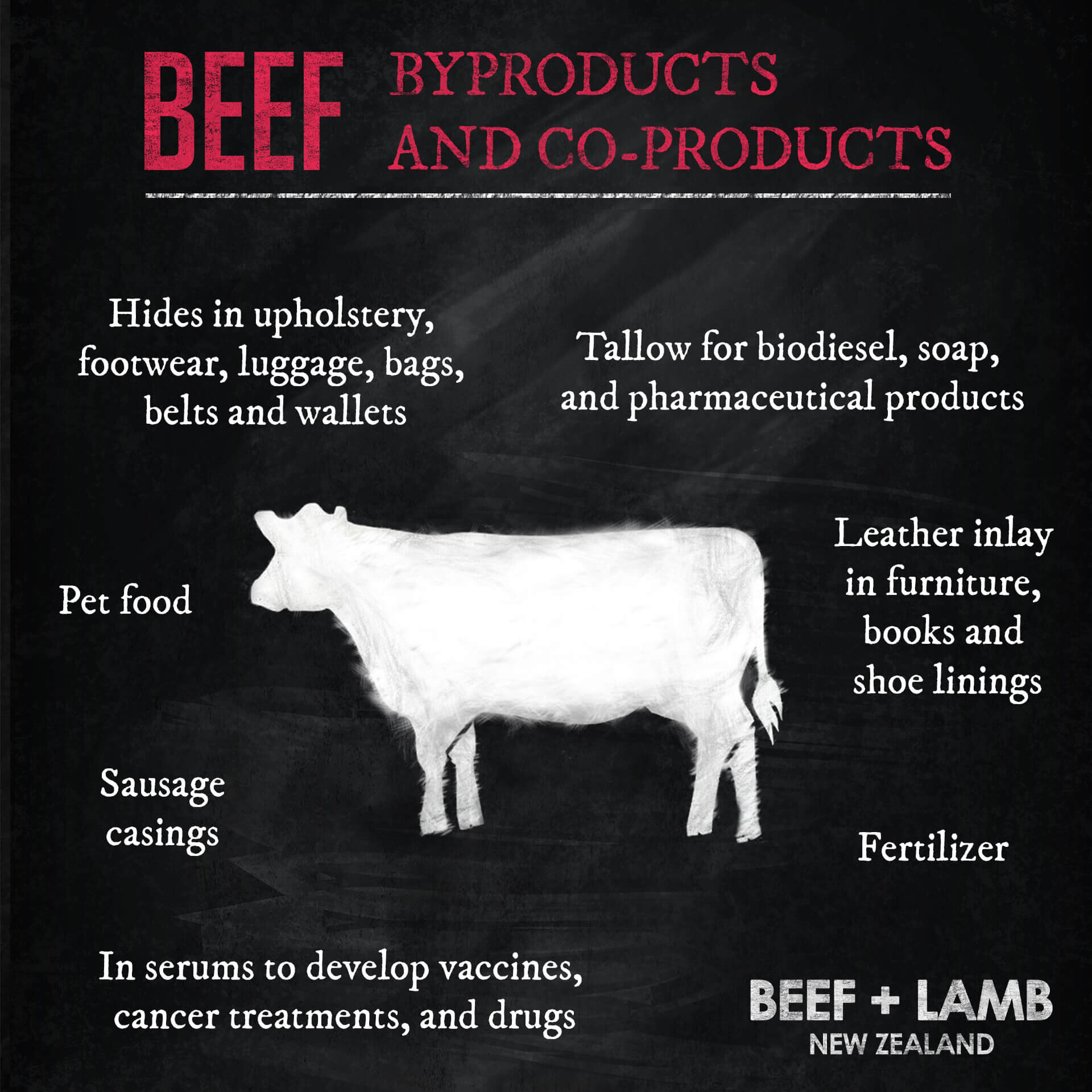The little-known world of beef and sheep byproducts and co-products
There’s more to beef and lamb than steaks and Sunday Roasts
When you think about meat processing it would be no surprise that the first output you thought about, was food. But what happens to the rest of the carcass? The parts that are not suitable or desired for consumption? That is where byproducts and co-products come in.
Referred to in the industry as the ‘fifth quarter’ co-products (materials intended for human consumption) and byproducts (materials that can be edible and non-edible) are valuable and account for over half of a carcass. These co-products extract maximum value and minimise waste.
With new technology and innovation, the use and application of co-products are constantly developing across a range of industries. Where once tallow was used for soap and candle making, now it is being converted to create a biofuel that burns cleaner and reduces emissions.
Examples of byproducts and co-products you may not have realised feature in your everyday life:
Sausage casings (mainly specialty sausages, and often lamb).
Meal to manufacture pet food kibble.
Tallow to manufacture biodiesel.
Hides for upholstery, footwear, luggage, bags, belts and wallets.
Deerskins for luxury handbags, wallets and garments. New Zealand lamb skins have been used in Prada and Gucci products.
Wool trimmings for slippers and fleece lined clothing.
Skins for wool-on rugs.
Sheep pelts for car chamois, leather inlay in furniture, books and shoe linings.
Pharmaceutical products use tallow for soaps, and lanolin for lipsticks and as an alternative to mineral oils and synthetic ingredients in cosmetics.
Products used as serums for the development of vaccines, cancer treatments and drugs to treat a range of neurodegenerative, haematological and endocrine disorders.
Byproducts and co-products are now value-added products. There are luxury fashion houses, in New Zealand and globally, who recognise the integrity and quality of New Zealand by-products and are utilising regenerative waste material that has a low ecological footprint. Skincare and pharmaceutical market leaders are using co-products to develop and champion new skincare and cosmetic ranges that are taking the very best New Zealand ingredients to the world.
Byproducts and co-products are responding to global goals to minimise waste, process sustainably, utilise all raw materials. As technology and research continues to develop, expect to see these co-products expanding and scale globally.



